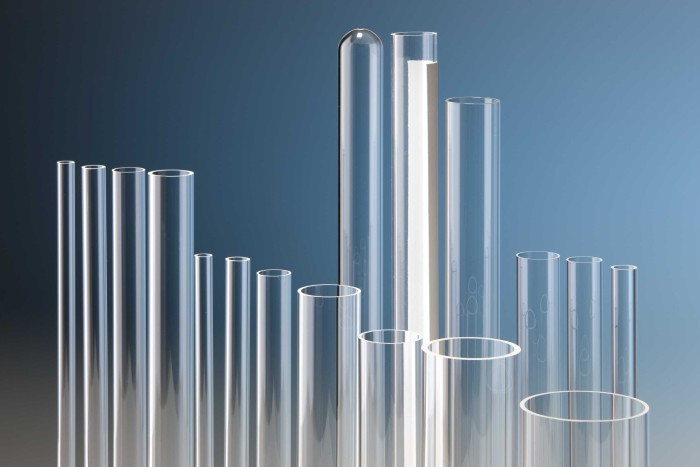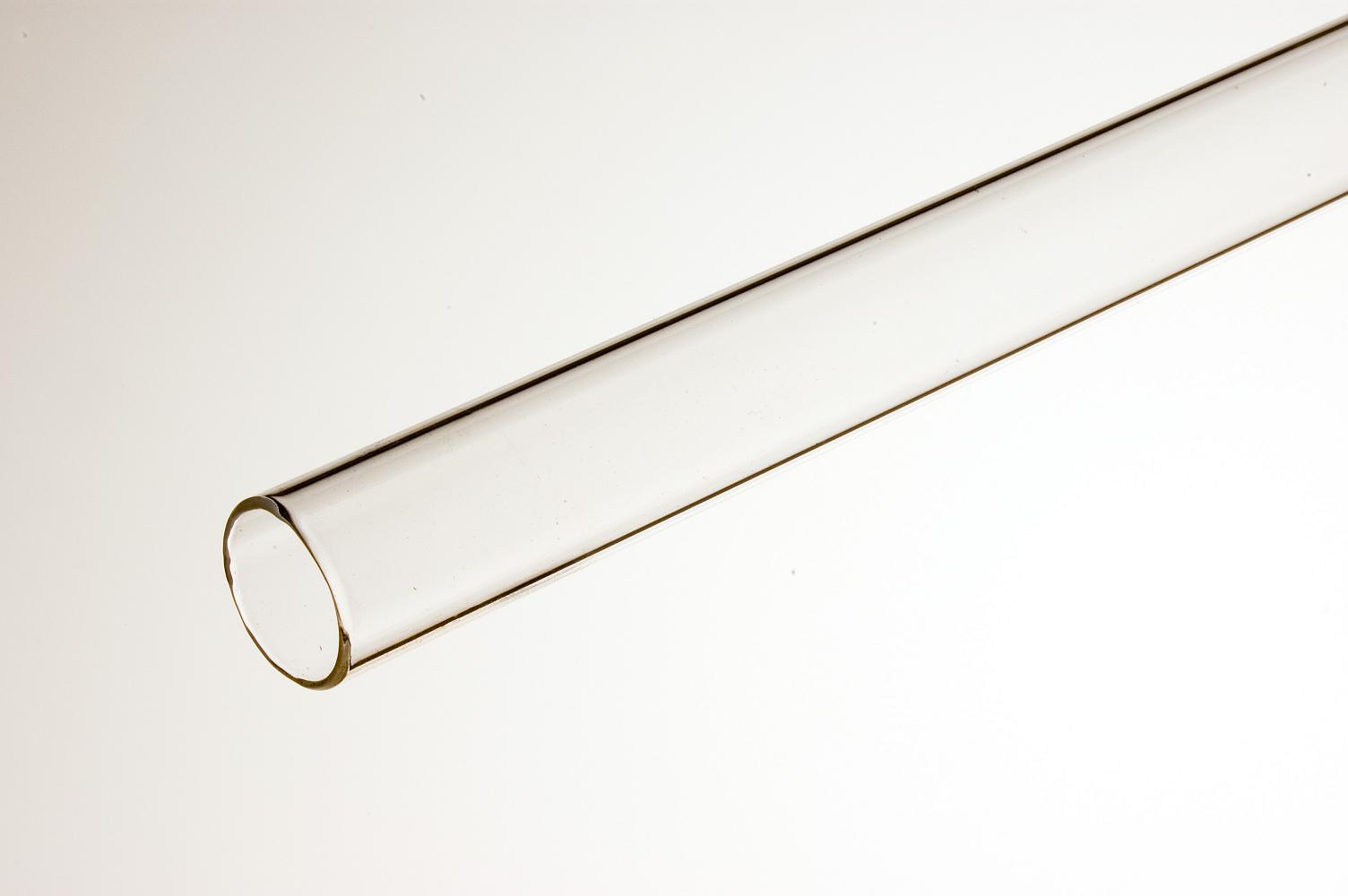Fused Silica is an ideal material for many applications. It is extremely transparent over a wide spectral range, has a low coefficient of thermal expansion, and is resistant to scratching and thermal shock. Optical quality fused silica (GE214) is ideally suited for applications for mid UV, visible and near IR spectral regions. Infralight UV grade fused silica is selected from among the best grades of silica. It offers high transmission and very low fluorescent levels. In deep UV applications, UV grade silica is an ideal choice.
Infralight offers a wide selection of stock quartz tube and quartz plate. The superior optical quality and transmission of GE214 fused silica should be considered for all demanding UV-IR applications.
QUARTZ TUBE & PLATE
Infralight manufactures fused and synthetic quartz plate and quartz tube for many applications including:
- UV disinfection systems & ultraviolet sterilization systems,
- Germicidal lamps, amalgam uv lamps and medium pressure ultraviolet lamps UV systems.
- Quartz tube and quartz thimbles are available as domed-end thimble (closed) or open-ended construction.
- All quartz tube is made from pure fused quartz or synthetic quartz depending upon application.
- Quartz tubes are available for standard low pressure and medium pressure ultraviolet uv lamps, replacement sewage and waste water treatment systems including Trojan UV, Davey UV, Berson, Calgon, Heraeus, Hanovia, UVTA, AUVP, AVP, UV Guard and many others.
- Contact Infralight for price and availability. Custom lengths and diameters are available by request.
- Infralight Australia offers a variety of quartz tube sizes and specifications. Infralight services include cutting, doming, bending, polishing and flaring.
Features include:
- Custom Lengths
- Flame Polished Ends
- Standard Wall Thickness
- Standard Sizes Outside Diameter/Inside diameter: 19×17, 21×19, 23×20, 25×22, 28×25, 32×28, 36×32, 44×40, 47×43, 48×44, 50×46
- Available with Domed (thimble) or open ended tube
- Lengths cut to size
PROPERTIES OF FUSED QUARTZ TUBE
The most important property of an optical material is the internal and external transmittance, surface reflectance, and refractive indices. Fused and synthetic silica are ideal materials for many optical and light applications where a high transmittance is required. Quartz is extremely transparent over a wide spectral range, with a low coefficient of thermal expansion and quartz is resistant to scratching and thermal shock. Synthetic fused silica is formed by chemical combination of silicon and oxygen. Fused quartz is made form crushing and melting natural materials. The purity of quartz is paramount to the efficiency of the ultraviolet lamp and quartz tube or sleeve. Fused and synthetic quartz ultraviolet lamps and sleeves offers the customer
- Greater UV and IR transmission
- Low coefficient of thermal expansion, providing stability and resistance to thermal shock over large temperature ranges.
- Increased hardness and resistance to scratching
- Higher resistance to solarisation or darkening from ultraviolet light radiation
- Density: 2.203 g/cm3
- Hardness: 5.3–6.5 (Mohs scale), 8.8 GPa
- Tensile strength: 48.3 MPa
- Compressive strength: >1.1 GPa
- Bulk modulus: ~37 GPa
- Rigidity modulus: 31 GPa
- Young’s modulus: 71.7 GPa
- Poisson’s ratio: 0.17
- Lamé elastic constants: λ = 15.87 GPa, μ = 31.26 GPa
- Coefficient of thermal expansion: 5.5×10−7/°C (ave from 20 °C to 320 °C)
- Thermal conductivity: 1.3 W/(m·K)
- Specific heat capacity: 45.3 J/(mol·K)
- Softening point: ≈ 1665°C
- Annealing point: ≈ 1140°C
- Strain point: 1070°C
- Electrical resistivity: >1018 Ω·m
- Dielectric constant: 3.75 at 20°C 1 MHz
- Magnetic susceptibility: −11.28×10−6 (SI, 22°C)
- Dielectric loss factor: less than 0.0004 at 20 °C 1 MHz typically 6E-5 at 10 GHz
- Index of refraction: nd = 1.4585 (at 587.6 nm)
- Change of refractive index with temperature (0 to 700°C) 1.28×10−5/°C (between 20 and 30°C)
- Strain-optic coefficients: p11 = 0.113, p12 = 0.252.
- Hamaker constant: A = 6.5×10−20 J
- Dielectric strength: 250–400 kV/cm at 20°C
- Surface tension: 0.300 N/m at 1800–2400 °C
- Abbe Number: Vd=67.82







